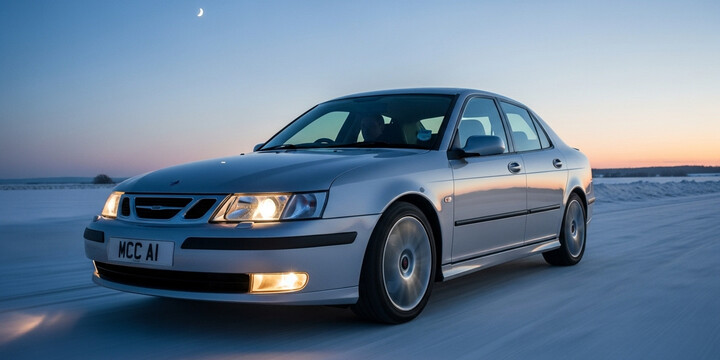
SAAB 9-3 (1998-03) 5DR HATCHBACK 2.2 TID AIRFLOW
The SAAB 9-3 (1998-03) 5DR HATCHBACK 2.2 TID AIRFLOW is a stylish and practical compact car that was popular among UK drivers seeking a blend of design, comfort, and performance. As a hatchback, it offers versatile cargo space and a comfortable driving experience, making it well-suited for families, commuters, or those looking for a reliable daily driver. Known for its distinctive Scandinavian design and solid build quality, the SAAB 9-3 stands out in its class with a reputation for reliability and a smooth ride. Its 2.2 TID diesel engine combines efficiency with decent performance, making it a cost-effective choice for longer journeys and regular use.
This model is often appreciated for its comfortable interior, good visibility, and distinctive styling that sets it apart from similar hatchbacks. Compared to rivals, the SAAB 9-3 5DR hatchback is valued for its durability and refined driving experience. With an average recorded mileage of around 101,188 miles and just two previous owners, it’s a car that has seen a reasonable amount of use but has been maintained well. Ideal for those looking for a dependable used vehicle that offers a combination of practicality, style, and a touch of Swedish flair, the SAAB 9-3 (1998-03) 5DR HATCHBACK 2.2 TID AIRFLOW remains a notable choice in the compact family car market.

average use

The data indicates that for the Saab 9-3 models (1998-2003) 5-door hatchback 2.2 TID Airflow, the most recent recorded mileage consistently falls within the 100,000 to 110,000 miles range. Notably, 100% of the vehicles in this sample have this mileage recorded, suggesting that this is a typical or common recorded mileage for these vehicles. There appears to be little variation in recent mileage readings, which could imply that most vehicles have similar usage patterns or that the data set is limited to a specific snapshot.

vehicle values

Based on the provided data, the private sale valuation for the SAAB 9-3 (1998-03) 5DR Hatchback 2.2 TID Airflow appears to be at the lower end of the price spectrum, with all vehicles falling within the "0 to 1000 UK pounds" range. This suggests that, for private sales, this particular model is valued at up to £1,000, indicating it is likely considered an affordable or entry-level vehicle, possibly due to age, condition, or market demand. No vehicles in the sample are valued above this threshold, highlighting that similar models tend to trade at lower private sale prices within this range.

production years

The available data indicates that, within the sample of Saab 9-3 (1998-2003) 5-door hatchbacks with a 2.2 TID Airflow engine, all observed vehicles were manufactured in the year 2000. This suggests a strong concentration of this model's presence around that specific year of manufacture in the dataset. However, it’s important to note that the data set appears quite limited, and additional information would be necessary to draw comprehensive conclusions about the full range of manufacturing years for this vehicle model.

colour popularity

The data indicates that all surveyed vehicles of the SAAB 9-3 (1998-03) 5DR Hatchback 2.2 TID Airflow model feature red as their main paint colour, accounting for 100% of the sample. This suggests that red is the exclusive or most predominant colour choice for this particular model, which may be of interest for buyers or enthusiasts seeking this vehicle in its original or most common exterior colour.

ownership cycle

The data indicates that for the 'SAAB 9-3 (1998-03) 5DR HATCHBACK 2.2 TID AIRFLOW', all registered keepers—100%—have only held the vehicle once, suggesting that every vehicle in the sample has had a single owner since registration. This consistency points to typically one-owner vehicles, which can be a positive indicator of the vehicle's history and potential reliability.

engine choices

The data indicates that all models of the Saab 9-3 (1998-03) 5-door hatchback 2.2 TID Airflow in the sample are equipped with a 2.2-liter diesel engine. This suggests a consistent use of diesel fuel across the entire sample, which aligns with the engine capacity of 2,171 cc. The uniformity in engine capacity and fuel type could be useful for buyers or inspectors focusing on specific technical details for this vehicle variant.












